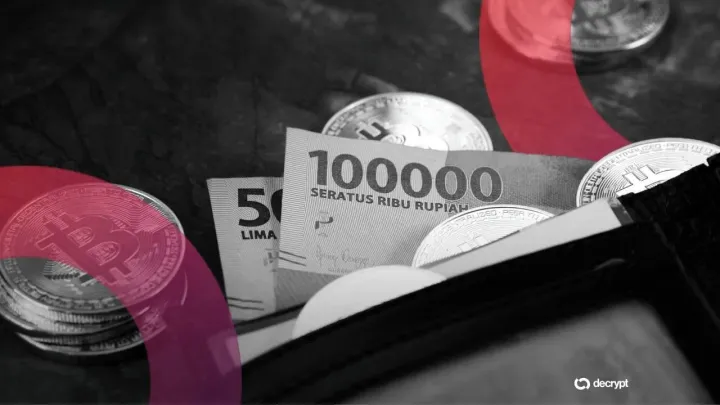A Comprehensive Guide On How to Spot Fake Web3 Projects.

The rise of Web3 covering NFTs, DAOs, DeFi, and more has opened exciting doors. But it has also attracted scams like rug pulls, fake token sales, and phishing attacks that have cost users billions. This guide will help you safely navigate the decentralized landscape by teaching you how to evaluate projects, recognize red flags, and protect your assets. 1. Evaluate the Team and Transparency Red Flags: Entirely anonymous teams with no verifiable history Profiles using stock photos or fake information No evidence of past blockchain work or code contributions Verification Tips: Search for team members on LinkedIn, GitHub, or Twitter to confirm activity Use reverse image search to detect fake profile pictures Look for interviews, AMAs, or online mentions that add credibility 2. Scrutinize the Whitepaper and Roadmap Red Flags: Vague or repetitive goals without technical depth Copy-pasted or plagiarized documents Unrealistic timelines and vague project milestones Bad grammar, inconsistent formatting, or lack of specifics Verification Tips: Use plagiarism tools like Copyscape Compare to reputable whitepapers from projects such as Uniswap or Ethereum Ensure the roadmap has concrete milestones, realistic timeframes, and detail 3. Analyze Tokenomics and Funding Structure Red Flags: Unbalanced token distribution favoring insiders Tokens with no clear utility in the ecosystem Unlimited or inflation-prone token supply Opaque fundraising with no transparency or accountability Verification Tips: Review allocation charts and vesting schedules Check whether the token serves real purpose, governance, staking, utility Look for clear disclosures of fund allocation Monitor wallets using explorers like Etherscan to spot sudden dump behavior 4. Investigate Smart Contract and Code Quality Tap into the technical backbone of a project: Red Flags: Unverified smart contract code No third-party audit or unreliable audit from anonymous groups Contracts that can be altered arbitrarily by developers Verification Tips: Confirm contracts are verified on explorers like Etherscan Look for audits from trusted firms like Certik, OpenZeppelin, or Quantstamp Review audit public summaries, disclaimers, and PoC coverage 5. Check the Community and Online Presence A project’s community gives insight into its legitimacy: Red Flags: Spam-filled social media, Discord or Telegram with bots Overpromising comments without thoughtful critique No active moderator presence or inconsistent messaging Verification Tips: Gauge twitter chatter: Are posts meaningful or repetitive hype? Join Discord/Telegram and observe behavior and tone Observe how the team responds to criticism or questions 6. Evaluate Marketing and PR Tactics Flashing banners and aggressive marketing can obscure reality: Red Flags: Promising high returns with little detail Impersonating big media or celebrity endorsements Paid promotions masquerading as organic hype Verification Tips: Verify collaboration mentions with known digital identities Avoid projects pushing FOMO or high pressure tactics Trust transparent, balanced messaging over hype 7. Watch for Pre-Sale & Token Launch Red Flags Pre-sales can seem enticing but may be risky: Red Flags: Offers private presales before any public testnet Terms that lock in beneficiaries and limit buyers Contracts that automatically distribute tokens without transparency Verification Tips: Understand presale rules and vesting terms fully Confirm fair launch mechanisms and smart contract fairness Final Checklist : Quick Authenticity Audit What to Check In A Project
Transparent team with track record.
Balanced tokenomics and utility.
Fair launch, fixed terms.
Audited and verified smart contracts.
Detailed whitepaper and roadmap.
Real partnerships and traction.
Active, engaged community.
Avoid These Signs In A Project
Anonymous, unverifiable developers .
Vague, poorly written documents .
Over 50% held by insiders, unlimited token.
No audit, upgradable proxy without checks .
Bot spam, hype-only chat .
Fake endorsements, clickbait PR .
Presales with loopholes and locked tokens. Tips To Protecting Your Crypto and Navigating Safely 1. Never share private keys with unknown dApps or sites 2. Use hardware wallets or secure wallets for transactions 3. Start small, never invest more than you're willing to lose 4. Track projects via trusted platforms (DeFiLlama, NFT floor trackers, CoinGecko) 5. Engage with knowledgeable communities on X (Twitter), Discord, or crypto-specific forums In summary, the decentralized future of Web3 is exciting but with opportunity comes risk. You don’t have to be a blockchain expert to stay safe.
Start by learning how to evaluate teams, whitepapers, tokenomics, security audits, and marketing cues, you can protect your assets and engage with innovation smartly. Stay curious. Stay bold. And always verify before you trust. If you found this insightful, please like, comment and share. Until then, See you in the other side that prints.


Comments ()